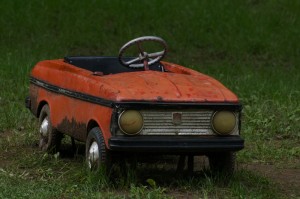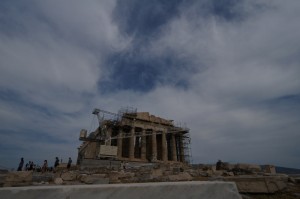Bucharest is full of magnificent Nineteenth and Twentieth century buildings, wide open streets and green leafy parks.
Everywhere you look there is another Neo Gothic, Neo Classical, Art Deco or Bauhaus inspired apartment block, palace or public building.
Bucharest is certainly not entirely an architectural nirvana, as they had their own version of Whelan, a dictator by the name of Nicolae Ceauşescu.
During his fanatical reign (1965-1989) he manages to have much of the old quarter demolished to make way for his obsession in Socialist Realist developments. The biggest of these is the Palace of the Parliament, a monolithic construction of 1,100 rooms and 12 stories high. Next to the Pentagon, it’s the world’s second largest public building.
There is more than just grand old buildings in Bucharest. You can also visit the ‘Dimitrie Gusti’ National Village Museum in Herăstrău Park. This is a large open-air ethnographic museum with houses, churches, mills and farm buildings from all over Romania.
Everything is made of timber and therefore in constant need of renovation. However the craftsmanship and detail in many of these old and somewhat primitive structures is amazing.
I still don’t understand why there is a red peddle car on display.

















Have you ever been intimidated by your dinner? (May 2012)
Saturday, May 26th, 2012We didn’t get a bad meal in Sofia and were interested to see if the standard remained high as we travelled east, in our hire car, to Veliko Tarnova, north to Russe, on the Danube and then south to the wonderfully named Plovdiv.
Plovdiv is a town endowed with a rich history starting with the Tracian settlement, on Nebet Tepe, through the Roman ruins to the Bulgarian Revival churches and houses. The day we chose to tour the city was a public holiday, celebrating the Bulgarian liberation from the Ottoman Empire, so it was family day in Plovdiv.
Our first night on the road from Sofia was in Veliko Tarnova, a city located on the bends of the Yantra River and famous for being the historical capital of the Second Bulgarian Empire and the medieval stronghold of Tsarevets.
We stumbled across a restaurant that specialised in Bulgarian cuisine and not knowing what this was, we ordered a dish each.
What followed was embarrassing.
When the food arrived we were so dumbfounded by the size and the apparent richness of what was before us, we just sat there, looked at the meal, then looked at each other and then looked back at the meal again.
Both the dishes had been baked in the oven and were full of different cheeses, meats and vegetables.
It was all delicious but just one of them would have been enough for both of us. In fact one of them would have been enough for an entire tour bus.
Bulgaria has not become a major tourist attraction yet and as a result their cuisine hasn’t gone through the food processor of tourist tastes.
The Bulgarians love to eat so it’s not hard to find a good restaurant with authentic food.
Then there’s the Bulgarian beers.
Every village seems to have their own brew and the big companies like Tuborg, Heineken and Amstel also have a local offering.
Unlike the food the weather has been inconsistent, hot and humid one moment and then pelting down the next.
My snaps probably reflect this.
Posted in Comment, Photography | No Comments »